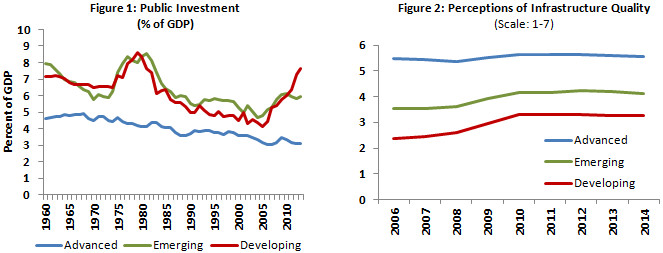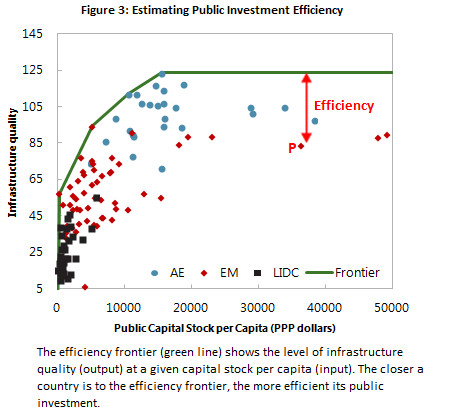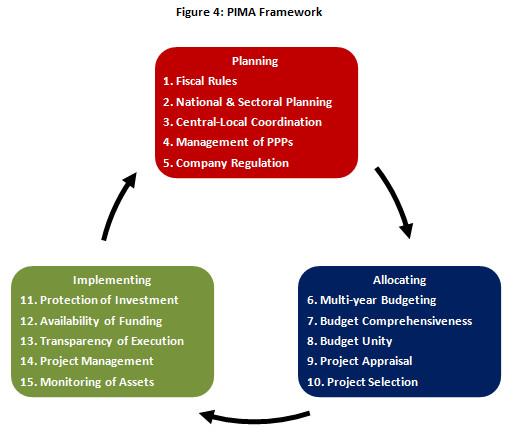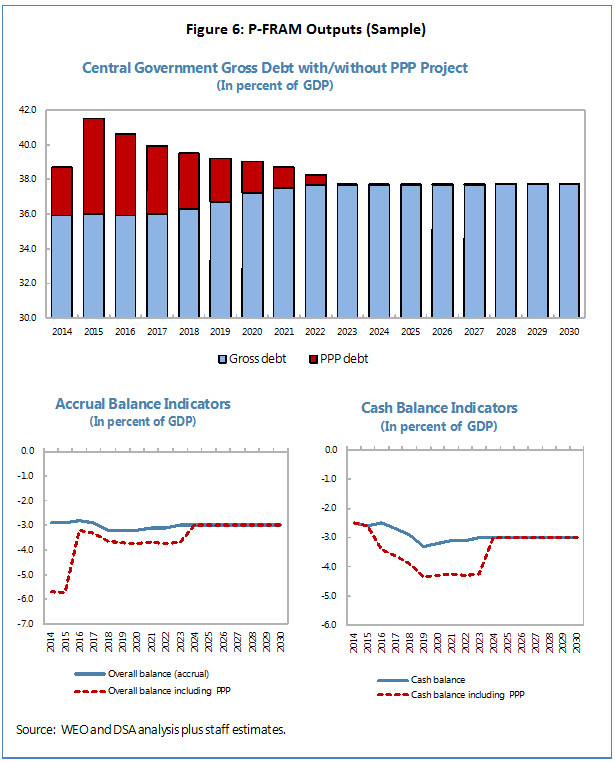Why Public Investment Matters
Addis Ababa, Ethiopia
July 15, 2015
Public investment supports the delivery of key public services through the construction of schools, hospitals, public housing, and other social infrastructure. Public investment also connects citizens and firms to economic opportunities through the provision of economic infrastructure hubs such as airport and seaports and networks which support telecommunications, transport, and electricity production and transmission.
Through the provision of both social and economic infrastructure, public investment and can serve as an important catalyst for economic growth. A significant body of theoretical and empirical resource underscores the positive relationship between investment in high-quality public infrastructure and economy-wide productivity. In the October 2014 World Economic Outlook, the IMF found that, for a sample of advanced economies, a 1 percentage point of GDP increase in investment spending would increase the level of output by about 0.4 percent in the same year and by 1.5 percent after four years.
Trends in Public Investment
After decades of steady decline, public investment has begun to recover in emerging markets and developing economies but remains at historic lows in advanced economies (Figure 1). The recent surge of public investment has helped reduce the perceived disparity in infrastructure across countries (Figure 2). This largely reflects improvements in the quality of and access to social infrastructure (e.g. schools and hospitals). Large disparities in economic infrastructure (e.g. roads and electricity) remain.

Public Investment Efficiency
The economic and social impact of investment critically depends on its efficiency. A recent IMF study explores different approaches to measuring public investment efficiency, defined as the relationship between the accumulated public capital stock per capita and various indicators of the quality of and access to infrastructure. The study finds that around 30 percent of the potential benefits of public investment are lost due to inefficiencies in investment process on average. The size of the efficiency gap shrinks as income rises, with developing facing a gap of 40 percent, emerging markets facing a gap of 27 percent, and advanced economies facing a gap of 13 percent on average.

The potential economic dividend from closing this “efficiency gap” could be substantial: the most efficient public investors get twice the output “bang” for their public investment “buck” than the least efficient investors.
Public Investment Management Assessment (PIMA)
The efficiency of public investment depends crucially on how it is managed. Countries with stronger public investment management institutions have more predictable, credible, efficient, and productive investments. Strengthening these institutions arrangements could close up to two-thirds of efficiency gap highlighted above.
To help countries evaluate the strength of the public investment management practices, the IMF has developed a new Public Investment Management Assessment (PIMA).
The PIMA evaluates 15 institutions that shape public investment decision-making at the three key stages (Figure 2):
- Planning sustainable investment across the public sector;
- Allocating investment to the right sectors and projects; and
- Implementing projects on time and on budget.

The PIMA provides the most comprehensive assessment of a country’s public investment management systems. In particular, the PIMA:
- covers the full public investment cycle including national and sectoral planning, investment budgeting, project appraisal and selection, and managing and monitoring of project implementation
- is relevant to countries at all levels of development by reflecting advanced practices in the areas of fiscal rules, oversight of PPPs, and monitoring of public assets
- offers an accessible summary of strengths and weaknesses in the form of summary charts showing how a country’s PIMA scores compare with their peers (Figure 3).

The PIMA findings of the assessment are set out in a concise report. The report estimates the efficiency of the country’s public investment, outlines the relative institutional strengths and weaknesses, and provides practical recommendations to enhance the efficiency and impact of public investment.
The IMF will be piloting the new PIMA assessment over the course of 2015 and 2016.
PPP Fiscal Risk Assessment Model (P-FRAM)
The P-FRAM is an analytical tool developed by the IMF and the World Bank to assess the potential fiscal costs and risks arising from Public Private Partnerships (PPP) projects. In many countries, investment projects have been procured as PPPs not for efficiency reasons, but to circumvent budget constraints and postpone recording the fiscal costs of providing infrastructure services. Hence, some governments ended up procuring projects that either could not be funded within their budgetary envelope, or that exposed public finances to excessive fiscal risks. To address these concerns, P-FRAM was developed as an analytical tool to quantify the macro-fiscal implications of PPP projects. It is designed to be used mostly by PPP units in ministries of finance.
P-FRAM provides a structured process for gathering information for a PPP project in a simple, user-friendly, Excel-based platform, following a four steps decision-tree:
- Who initiates the project? The impact of main fiscal indicators (i.e., deficit and debt) varies depending on the public entity ultimately responsible for the project (e.g. central, local governments, state-owned enterprises, etc.).
- Who controls the asset? Simple standardized questions assist the user in making an informed decision about the government’s ability to control the PPP-related asset—either through ownership, beneficial entitlement, or otherwise.
- Who ultimately pays for the asset? The funding structure of the project is what determines its implication on main fiscal aggregates. P-FRAM allows for three funding alternatives: (i) the government pays for the asset using public funds; (b) the government allows the private sector to collect fees directly from users of the asset (e.g., tolls); and (c) a combination of the two.
- Does the government provide additional support to the private partner? Governments can not only fund PPP projects directly but they can also support to the private partner in a variety of ways, including providing guarantees, equity injections, or tax amnesties.
Once project-specific and macroeconomic data are introduced, P-FRAM automatically generates standardized outcomes. The latter include: (i) project cash flows; (ii) fiscal tables and charts both on a cash and accrual basis; (iii) debt sustainability analysis with and without the PPP project; (iv) sensitivity analysis of main fiscal aggregates to changes in macroeconomic and project-specific parameters; and (v) a summary risk matrix of the project.

P-FRAM is currently being pilot-tested in various platforms, and the current version is available for download.
Investment and Capital Stock Dataset
Public investment can be a catalyst for growth. As part of the IMF’s work on public investment, the Fiscal Affairs Department has compiled a comprehensive database on public, private, and public-private-partnerships (PPP) investment flows for 170 countries. The database also includes estimates of real public capital stocks, between 1960 and 2015. This note provides a brief overview of the data sources, methods, and main trends, and is accompanied by an update of the Investment and Capital Stock Dataset (since last release of September 2015), and a detailed Manual and FAQ of the database construction.



